|
|
|
 |
|
|
 |
“Shall we gather at the river?” Pooler asked no one. Many things came back from the crusades. The Gothic arch, stolen from the Arabs. The head of John the Baptist, stolen from Constantinople. And several drops of Christ’s crucified blood in a small crystal reliquary, stolen by Pooler Jones. The blood ended up in a chapel in Bruges and before too long the northern city became a pilgrimage site. Suddenly France, England, Germany, and Italy all claimed to also possess precious drops of the blood of the savior. It was a “violently realistic age” as Emile Mâle put it. And by that he meant that it was a time of brutal and bloody and Macabre imagery. It was the last great age of the Body and how the body knows the world. The last physically sensual world. The last time in the West when the human form was seen as the microcosm to god’s macrocosm. Having pieces of the Saints as relics was far more powerful than having nuclear missiles. The saints saw god everyday; they bathed in him. If you owned a piece of that saint you owned a chunk of Grace, a source of Indulgences. You became a player in the first Trans-European Economy - the Economy of Sin and Penance, Purgatory and Indulgences. The church had figured out a way to extend its taxes and tithes from this life into the next: they invented Purgatory - a place between states between heaven and hell and between life and your own personal afterlife. Purgatory was like Indiana to Skippy on his Motorcycle - a Get-Thru State. Simply put: The church had the dead working for us in purgatory. And then they put the living at work for the dead. Purgatory was a place of purification; it was where the soul went to suffer for that portion of its sins which had not been redeemed in life. Since the soul could do no more for itself after death but endure endless pain and misery it had to rely on the living to buy and pray and give and work for the Soul’s Whole Redemption. Sin had a price and you had to pay, either here with the quick, or later with the screaming and the tortured - but there was a Specified Sum and you had to pony it up. You had to pay.
|
|
|
Most Cultural Historians agree that it was those first drops of the true blood which came back with the Knights Templar during the crusades which began the Cult of the Holy Blood and that it was this cult which gave impetus to the Grail myths and to the elaboration of one of the great themes and motifs of medieval iconography and symbolism: The Fountain of Life. The theme has several variations, but the prototype of the motif is a scene where Christ hangs on the cross while the blood from the Mystic 5 Wounds - two in the palms of the hands, two in the feet, and the one in his side - the most famous of the wounds - the perfectly symmetrical Yoni/oval wound in his side which was made by a Roman soldier’s lance. Himmler and Hitler spent years looking for that lance and there are some that say they found it. From this wound poured, as if from a fountain, both Water and Blood. The cross was usually set not into the earth of Golgatha but into a basin, a vat, or a cup - often with eight sides like the traditional Baptismal Font in the rear of Catholic churches. So into this Vas flowed the blood of the crucified Christ - who was smack in the heart of the process of paying his sum, his tax on being the son of god. His Kenosis. In the Roman Catholic Breviary it is written that “who so ever washes in the blood of Christ will emerge purified.” Sometimes in the motif, on the rim of the basin is written: Fons vitae, Fons Misericordiae (fountain of life, fountain of mercy). Sometimes Adam and Eve are shown standing up to their waists in the cup of blood where they gaze at it - not the dead Christ - lovingly. Often the 4 Evangelists Matthew, Mark, Luke & John are shown either seated on the rim or standing around it and touching the vas. In churches at Chinon, Dissais, and St.-Antoine du Rocher the 4 gospel sources are not physically present but instead the scene shows the blood flowing into a tower or double basin where the blood fills up a smaller basin on top and then pours from the spigot mouths of 4 animal masks which are the symbols of the 4 evangelists into a larger basin below. Which as Mâle points out “is an ingenious way of saying that the miracle of forgiveness has the Gospels as Authority . . . the Word of God Himself.” Sometimes Peter & Paul join the scene. Most often the 2 Marys - the Virgin and the Magdelene - stand right beside the basin. Sometimes 7 lithe and young female figures - kind of like the Keltic Girls - are shown around the basin helping the John into the pool for his redemption. They represent the 7 virtues which are always hovering in medieval tableaus. |
|
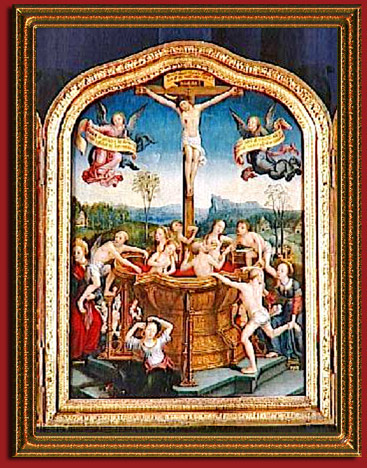 |
|
|
Emile Mâle owns a room in Skippy's head. His 3 Volume Masterwork on Religious Art in the French Medieval are 2,000 pages of Iconography tied to Geschichte and Heilgeschichte. Skippy swims in them like the sinners above coming clean in the Blood.
|
|
|
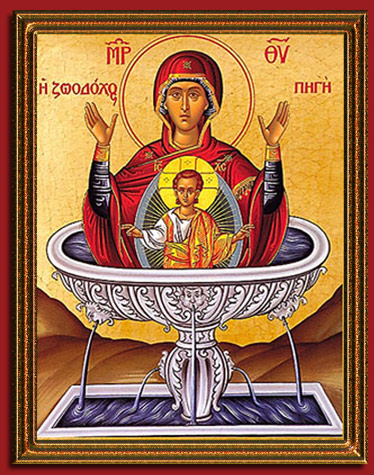 |
|
|
|
It is not a surprise that these "Christian" Themes are also present in Alchemical as well as Sufi traditions. If you look at an Icon like the one to the left long enough - or the one underneath - you might start Hallucinating the Construals of Paul Mclean or Wilder Penfield. You cannot stop the Mind from either Creating or Grasping at Images of Itself. That type of Vanity is built-in - Factory Installed. Like Yahweh - all alone before the Creation - How was He to Know Himself? Except by fashioning Examples of Himself in Other Things. It's that "Other" shit which is the Bitch. The Icon of the Fons Vitae - the Fountain of Life - became "Popular" when the Popular-Mind had developed the tools with which to grasp it. All Imagery is a Measurement of Mental Development & Mental Dispositions. Big Thoughts with Clothes-On so we can see them. Thinking Needs to See itself in the World. That's one of those Ground Rules of the Science of Semiotics. It's all about Communication between the Parts of a System. So such Talk must be in the Terms of the System itself. Every Code must be created from Self-Consistent and Self-Referential Parts. So if you want to see the Mind or the Mind of God you have to look first Within for ready Vehicles which can Carry God's Thoughts. Lucklily, you don't have to learn a separate language. You already speak the Tongue - your Body has known that Speaking all of its Existence. All of it. Long past Aaron Hakohen and his Genes. Long past the Monkeys. All the way to the Mud. So you don't really have to ponder why Jesus and Mary are in the Bath. Or where their Legs are? Or why 4 Streams Above water the Basin of the 2 Streams Below. And what's everyone saying with their Hands? Mary wears Red a lot more in the East than in the West where she is most likely robed in Blue. Jesus wears Yellow well - Just like the Sun. But you already know these things. And many more.
|
|
|
|
By the late Middle Ages the theme added its last and most telling element: rather than show Christ hanging on the cross with the blood running down over his body, the new rendition showed a recumbent or lying Christ being slowly squashed of his blood under the screw of a Wine Press. Here his blood flowed “like the juice of a grape and ran into the vat.” Like its parent The Fountain of Life, the Mystic Wine Press became an iconographic tableau - a set piece - a theme which quickly spread itself across Christianity. What is most interesting about the Pressoir Mystique theme is that it appeared at the same time as Europe was being rocked with the rediscovery of Hermetic literature and the Rosicrucian Furor. It was the Zenith and the End of Alchemy and its mindset. It was right at the beginning of the Entzauberung der Welt and it was as if the press was brought on board to squeeze the last drops from a quickly draining Christ, an emptying Christ. Skippy owns 3 different books with that titile: The Disenchantment of the World. And while they riff off each other they each move in their own directions. Like Emile Mâle, the Entzauberun der Welt has become so much apart of Skippy that he thinks it's his idea. |
|
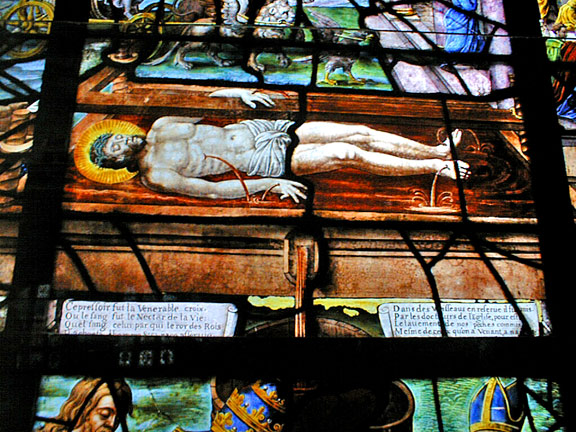 |
|
|
|
|
|
|
|
|
|
|
|
|
|
|
|
|
|
|
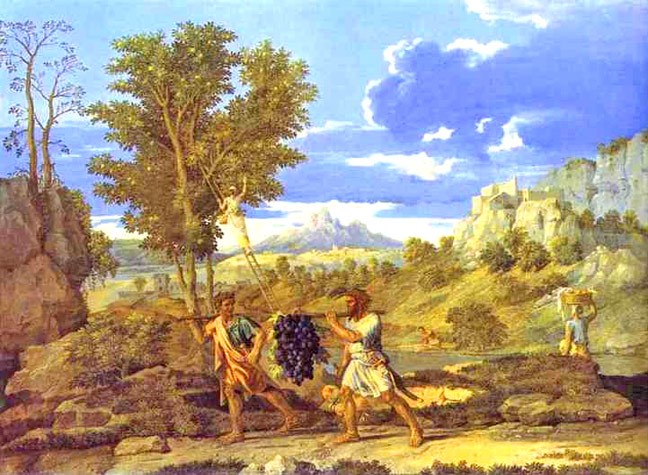 |
In the Book of Numbers in the Old Testament there is a story of a "miraculous cluster of grapes that the spies carried back from the Promised Land suspended from a pole.” In the Typology of the medieval mindset and indeed in the typology of any mind still caught in the entanglement of the Theory of Correspondences of Hermes/Thoth - any mind still looking out of Allegory and Analogy, any pre-scientific mind - in that mentalité it was plain to see that the OT scene was a Type of the New Testament scene of the miraculous Christ on his own pole bleeding out his healing nectar to the thirsty. As Slag would say: It’s a thing of beauty. So the Wine Press is the cross of Christ and the Pole which holds the miracle Grapes of the Jews. That type of thinking is by definition Alchemical. That’s what Alchemy is: Seeing in Tongues. The ability to recognize the separate levels of the single reality - the alternating facets of the Necker Cube - all at once because it is all one. Alchemy is POE with a Mission. It’s a lump of shit which knows it’s gold.
|
|
|
Then in another OT text the Prophet Isaiah, “in mysterious verses, speaks of him that comes from Edom with red garments and has trodden the wine press alone.” The red garments, the church said, was the bloody robe of Christ himself. When it was pointed out that St. Augustine - numero uno of the “founding fathers” of the organized church - had written that “Jesus is the grape of the Promised Land, the botrus placed under the press,” then the legitimacy of the motif was assured. The church had Triangulation and a dogma took shape. Mâle says: “From this time on the symbol was consecrated.”
“It’s almost erotic,” Pooler Jones said. We were alone in front of the vitraux. It was late December - no longer the season, no longer an age when hunted alchemists and other heretics would “gather at the river” in front of the image in the small white eglise on the mount. The image of the Mystic Press started in hymns at first, Pooler explained, because before the High Gothic no one as of yet possessed such a “sensual imagination” which could transform the image from music into the visual arts. It just wasn’t a thought you would have or even could have had before a certain time in European mental history. You needed the Black Death and in fact an entire era of plagues and misery. Fear so nicely concentrates the artistic urges. Half of Europe had to drop dead in front of you before you were likely to start doodling images of how cool it would be to torture god.
"Bitch-of-Büchenwald if you think of it,” I answered.
The “Fountain of Life” was just not bloody enough for the soul of the age. The Gothic mind had seen far too much death to be queasy about the livid details. It was a mind which demanded specifics: “SHOW ME THE WOUNDS!” was its motto. It was a mind which had moved from Demonstrative Rhetoric to Forensic Rhetoric. It needed proof. It needed relics. Something to touch. It wanted blood - and not just its own - it was a mind that wanted God’s Blood. Western Iconography had never before demanded such macabre realism, but then it had never before demanded the degradation, torture, punishment and death of its god. When the imagery shifted from the Cross-in-the-Vas to the Body-under-the-Press the focus of Christian sentiment shifted from “Passion to Eucharist” - from the empathetic suffering of god to the cold & reasoned utility of god - Eucharist was a ticket to redemption. Man’s ticket to redemption. In an earlier, more sympathetic age, man had actually wept at the thought of his suffering god but in the new artificial light of the Renaissance, just over a century past the the Atra Mors - La Peste Noire - it was decidedly post-grieving and man was checking out the insurance benefits and thinking to himself: Fuck it; he’s dead. Maybe we can use the parts. So eat your God - it’s the only way out of this, the only way back home. |
|
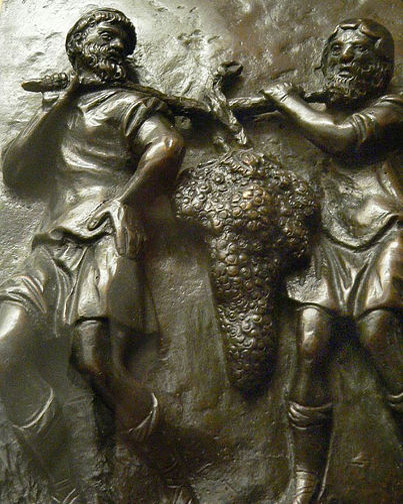 |
|
|
"For the Middle Ages the whole universe was a symbol. It knew that everything on Earth is a sign, everything is an image, that the visible is of value only in the measure that it covers the invisible. The Medieval period, which consequently was not the dupe of appearances, as we are, studied very closely the science of symbolism, and made it the purveyor and servant of mysticism.”
|
|
|
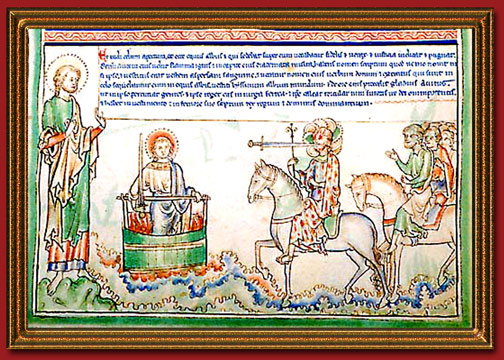 |
|
|
|
So it was, almost erotic. In an S&M way. Mâle writes: “Is it not strange to see Christian art embodied in flesh and blood at just the time when the reformers were to announce the reign of pure spirit?” The reformers being Protestants and their Iconographic vanguard - the Hermeticists, Rosicrucians, Alchemists, Neo-Platonists, Neo-gnostics and other shock troops who were assaulting the assumptions of the religious monopoly enjoyed by the Catholic Church. The focus of this assault was on the Dogma of the Eucharist, the consecrated wafer of bread which became the Corpus Hermeticum at the Transubstantiation of the Mass. Was it Symbol or Sign? Is the presence of the divine Homologous or Analogous in the Communion Wafer? All great intellectual and artistic shifts are Semiotic at base. Roland Barthes was right about that: Nothing is Natural - Everything is Discourse. Body and Blood are Vehicles, but are they Tenors too? Like all good Wars the argument would begin with Symbols. Later, at White Mountain, there would be time enough for broad swords and pikes.
|
|
|
|
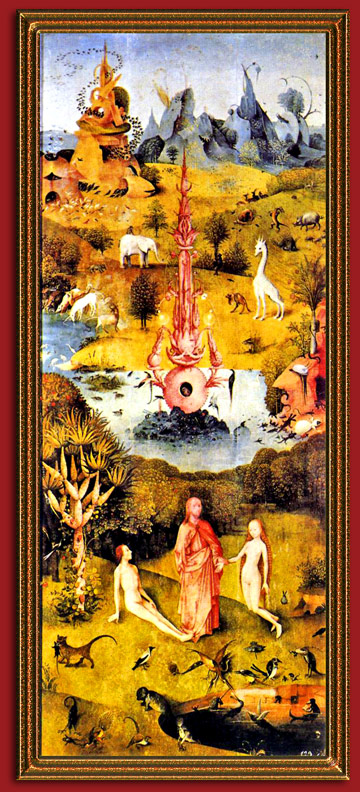 |
|
|
So the stained glass window of the Mystic Wine Press at St. Étienne-du-Mont was fashioned by the Church as a piece of Propaganda. It was as Mâle described it a salvo at the Protestants who denied the Dogma of Real Presence. It was meant as a visual reminder that Christ’s Blood was the redemptor of the world; it was the Philosopher’s Stone and the locus of the divine in the physical. Protestants were to reject the Eucharist, the Blood, and the Altar which is the Vas of the Work of the Mass. They would instead refocus their sentiments on the Word of God by lifting it up off the poor bloody scourged Body of God. Such propaganda programs in iconography had been attempted by the Church before. In the 13th century the case against the Jews was methodically laid out in thousands of statues and windows and images in Cathedrals and churches all across Europe. It is sometimes shocking to realize the shear volume of Old Testament Jewish Icons and figures who are arrayed across the media of the Medieval. For a decidedly Christian age it seems nearly obsessive to present so many non-Christian exemplar. Only when we remember that Typology and the Theory of Correspondences are what rules the logic and causal-analysis of Middleman can we correctly see the images of the Old Testament Jewish world being used as Foreshadowing and Justification - as Types - of New Testament Christian truths and scenes. As Mâle put it: “In Medieval Art every form clothes a thought.” In his book The Bestiary of Christ, Gavaert writes: “For the Middle Ages the whole universe was a symbol. It knew that everything on Earth is a sign, everything is an image, that the visible is of value only in the measure that it covers the invisible. The Medieval period, which consequently was not the dupe of appearances, as we are, studied very closely the science of symbolism, and made it the purveyor and servant of mysticism.” Therefore all Old Testament figures are “Types” - they are Adumbrations of Christ and the life of Christ. So when in a window you see Gideon calling down rain from heaven you know that is part of the causal-proof chain which foreshadows and predicts Mary on whom the “dew” fell from on high. Which was a pre-deductive way of saying that Jesus would be born to a virgin impregnated by the spirit or the “Dew” from on high. And both of them are themselves Types of the larger truth that all the Gods are always recreated and transformed “Spirits” psychologically “impregnated from on high” by the necessities of a higher order thinking and ranking skill. A figure like Gideon always appears on the psychological stage in an age or in a single life which is a “Wasteland” without fertility. A Kenotic age when all of spirit has been emptied out and there is nothing to nourish the starving soul. The 4 OT Rivers which surrounded Paradise are Types of the 4 Evangelists who “flood the world with their teachings like the 4 streams”. Thus did the Jewish Old Testament become a “Christian” book whose only purpose was to prophecize and bear witness thru Symbolic Correspondences to the truths of Jesus and his Passion, death, and Resurrection. |
|
|
|
|
|
|
|
|
|
|
|
|
|
|
|
|
|
|
|






